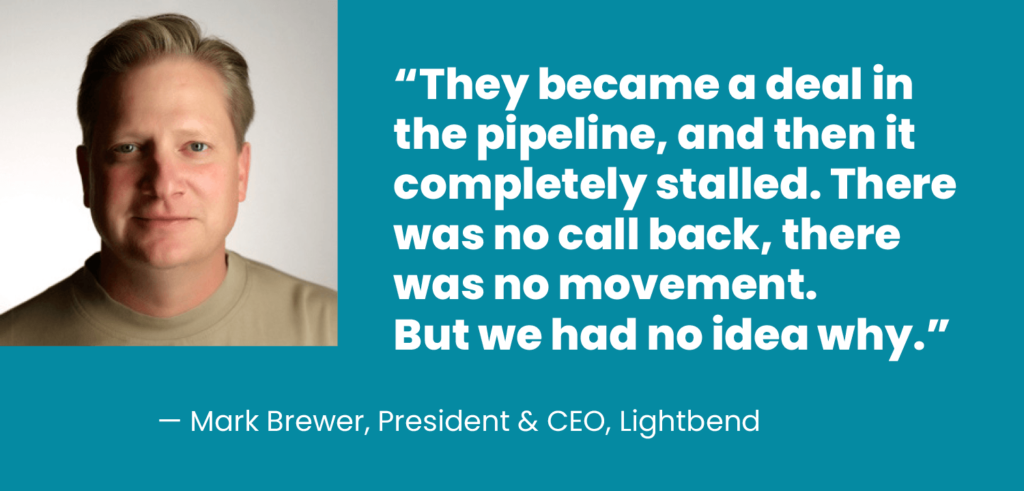Lightbend is a high-growth leader in the transformation toward real-time, cloud-native enterprise applications.
Lightbend has helped customers like CapitalOne, Verizon, and Starbucks become real-time enterprises. CapitalOne, for example, has used Lightbend’s technology to transform its auto loan decisioning from a 55-hour turnaround to near real-time.
The Challenge: Landing Better At New Accounts
Lightbend has fueled this growth with a land and expand go-to-market strategy.
Though the Lightbend team “hadn’t completely unlocked the expand side of the business in 2018, there was a predictability to it and a higher probability to close,” says Lightbend’s CEO, Mark Brewer. “But the land side of our business perplexed us. We were at 50% of our target for net new accounts. So we relaxed our qualification criteria, which is not a recipe for long-term success.”
To keep driving strong growth, Lightbend needed to learn how to land better.
Mark and his management team knew the problem was early stage losses. They had analyzed their pipeline data and could see that too many opportunities were getting stuck early in the sales process.

Sales needed more pipeline to offset the losses. Marketing’s perspective was that while their new ABM strategy was performing well, there was no way they’d be able to boost the SAL number significantly enough to hit the target for new accounts.
“We had to improve sales engagement. We had to improve pipeline conversion. But we didn’t know what that looked like,” Brewer says.
Did they need to improve the sales process, execution of the process, or something else?
The Missing “Try Before You Buy” Option
Growth Velocity proposed a program of buyer interviews and Win/Loss Analysis to generate insight into the causes of the early stage losses. After selecting a group of recently closed deals, both won and lost, Lightbend’s sales team introduced the sponsor at each account, and Growth Velocity interviewed ten of them.
The interviews revealed that a primary cause of Lightbend’s losses was an internal conflict about paying for open-source software. Enterprise Architects — who often champion Ligthbend in new accounts — wanted Lightbend’s expert guidance and commercially available tools as they developed a new application. But that conflicted with an engineering culture that wants to “get everything for free” where open-source software is concerned.
“Lightbend’s buyers wanted to reduce risk. That was the business benefit they sought from the Lightbend offering. Yet buyers in the lost deals perceived the Lightbend purchase itself as too risky.”
— Willem Maas, President, Growth Velocity
Champions in new accounts wanted to trial the Lightbend offering to get more engineers to buy into the idea of paying for open-source software. They hoped to create internal advocates for Lightbend’s approach and tools and then make a bigger commitment.

But Lightbend lacked a “try before you buy” option in its packaging and pricing at the time. Without a trial, it was harder for champions to convince others to support the purchase. Pushing ahead without broader support for the Lightbend subscription was too risky—and more time-consuming because the larger purchase of a full subscription required a purchase order and approval by Finance.
Removing Friction In The Buying Process
Lightbend acted quickly to remove this friction in the buying process. And now Lightbend is landing better.
New “try before you buy” options were introduced by unbundling Lightbend’s training and commercial software from the subscription offering. First, the company launched Lightbend Academy, an online, self-paced training portal, which includes access to the company’s non-open source commercial software. Then, Lightbend introduced a series of instructor-led training courses, provided by certified training partners.
“We’ve hit our targets for new logos the last three quarters.”
— Mark Brewer, President & CEO, Lightbend
Now Lightbend’s champions in new account opportunities are able to generate broader support for a purchase. And team members are gaining the skills necessary to use Lightbend’s technology.

